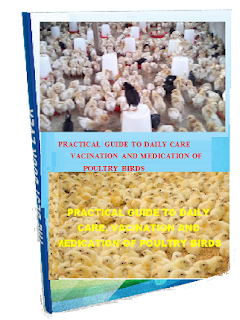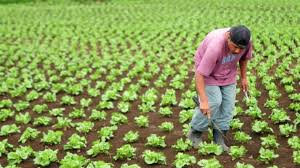Vaccination for various types of chicks
Vaccination
is an integral part of a good poultry management programme. The primary
objective of vaccinating a flock is to reduce the level of clinical disease and
to promote optimal performance.
In Summary
· Vaccination
is an integral part of a good poultry management programme, as it is key in the
success of a farm.
·
However,
it should not be a substitute for bio-security and sanitation because
vaccination may not totally protect birds that are under stress or in
unhygienic conditions.
·
The
primary objective of vaccinating a flock is to reduce the level of clinical
disease and to promote optimal performance.
·
Poultry
vaccines are biological products that induce an immune response to the specific
disease-causing agents.
·
The
bird’s immune system will react, creating a “memory” response of antibodies and
immune cells, according to the type of antigen in the vaccine.
·
The
more a bird is exposed to the same antigen, the greater the antibody response
and resulting protection.
This is the reason
many flocks are vaccinated multiple times for the same disease – to maximise
the immune system’s response.
Poultry vaccines come
in three general forms: modified or attenuated (live), inactivated (killed) and
recombinants.
Live vaccines are
milder forms of field strains that are naturally or genetically modified.
Inactivated vaccines
are whole viruses or bacteria that have been inactivated during production and
formulated into an injectable form. Recombinant vaccines are made by using live
virus or bacteria as a vector to transport the gene coding for the protective
antigen of a second infectious agent for which immunity is desired.
When handling poultry
vaccines, observe the following: transport in well-insulated cool boxes
containing ice packs to keep the temperature constant, store in temperatures of
between 2oC to 8oC, avoid exposing them to freezing, extreme heat and intense
light and only mix live vaccines with diluents (reconstitute) just before
application.
VACCINATE WHEN IT IS
COLD
Further, inactivated
vaccines should be removed 24 hours prior to vaccinating so that the product
can warm to room temperature or alternatively, use warm water (not exceeding
100oF) for not more than five hours, never expose vaccines to direct sunlight
and lastly, gently agitate bottles containing inactivated vaccines thoroughly
prior to use.
Poultry
vaccines are biological products that induce an immune response to the specific
disease-causing agents.
Vaccinations should always be done during the cooler part of the day, either early morning or late evening.
Before vaccination,
ensure that there are sufficient doses to cover the flock and that the birds
are healthy. Also ensure that the vaccines have not expired.
In East Africa,
broilers are vaccinated against Infectious Bronchitis (IB), Newcastle Disease
(ND) and Infectious Bursal Disease (IBD/Gumboro) while layers should be
vaccinated against mareks, infectious bronchitis, NCD, Gumboro, fowl pox, fowl
typhoid and fowl cholera.
REQUIRE MORE VACCINES
Layers require more
vaccines since they remain in production for longer (usually about 18 months)
compared to broilers that are slaughtered at two months old.
This means that
layers are exposed to diseases for longer and need re-dosing with vaccines.
It is not
recommended, neither is it necessary to vaccinate broilers beyond day 24, since
the vaccine cover is sufficient until slaughter (if slaughter is done at the
conventional time of 60 days).
Furthermore,
vaccination is stressful to the birds and doing so beyond this period (day 24)
slows down their growth at a time when fast growth rate is of paramount
importance
Commercial layers can be dewormed at 18-19 week, while fowl pox susceptibility increases with elevated temperatures.
Commercial layers can be dewormed at 18-19 week, while fowl pox susceptibility increases with elevated temperatures.
It is also worth
noting the following when administering vaccines:
·
Administer
vitamins a day to vaccination and three days after to minimise stress.
·
Never
mix vaccine and vitamins.
·
Do
not vaccinate sick birds. In case of any ongoing antibiotic flock treatment,
withdraw the treatment three days prior to vaccination.
·
Minimise
vaccine reactions by reducing exposure time after preparation.
·
For
vaccines administered through drinking water, the drinking time should be at
most three hours. Discard the remaining water, wash the drinkers and provide
fresh water mixed with vitamins.




Comments
Post a Comment